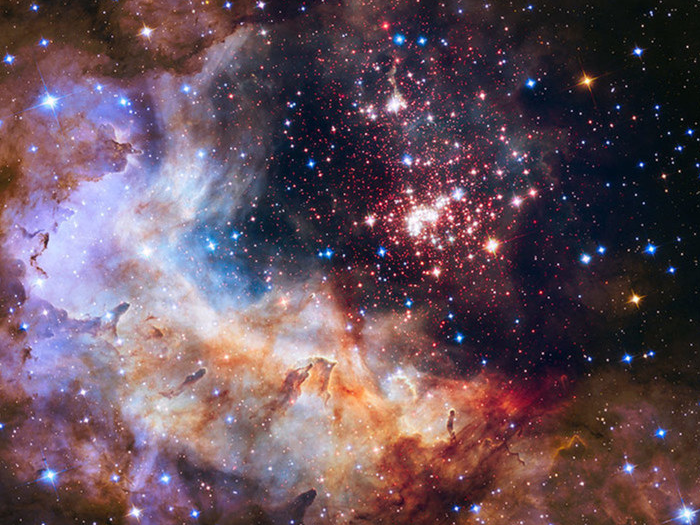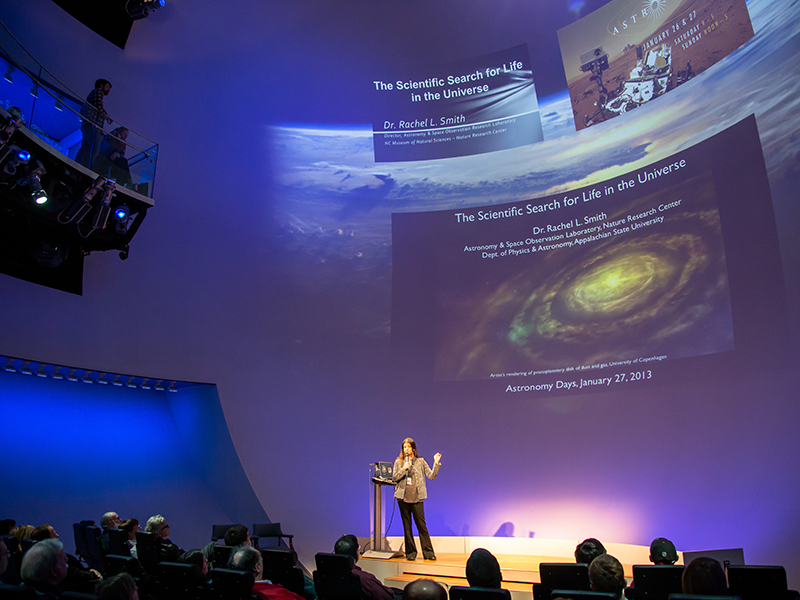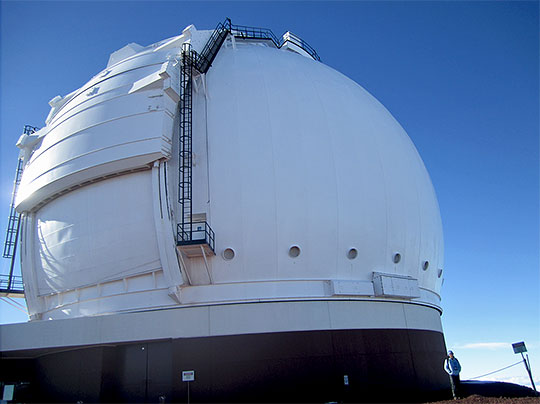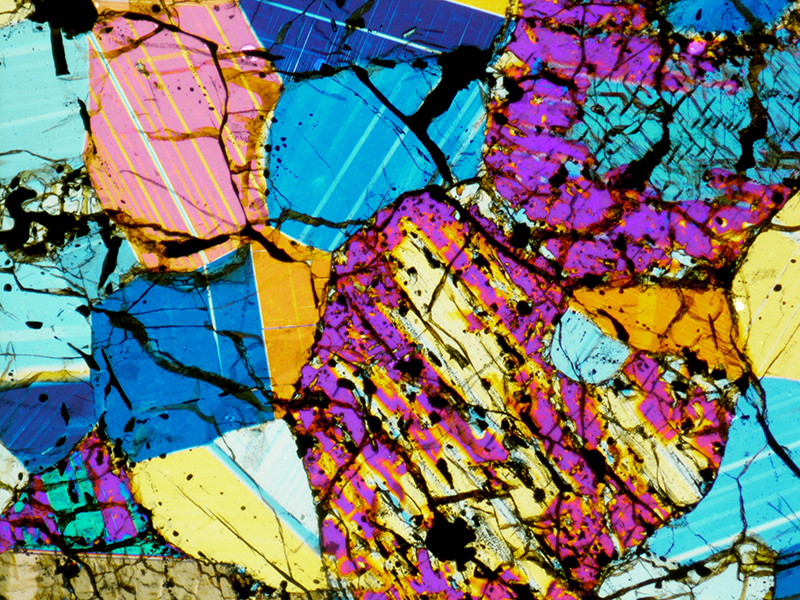The Early Solar System and Our Own Beginnings
Research at the Astronomy & Astrophysics Research Lab (AARL) spans from understanding the early solar system and our own beginnings to the origin of galaxies in the Universe. Dr. Smith, the AARL Director, uses the largest optical- infrared ground-based telescopes, such as the Keck telescope on Mauna Kea in Hawaii, to investigate the earliest stages of star formation, and the chemistry of gas that will form planets and eventually, life. Dr. Patrick Treuthardt, the AARL Assistant Director, researches the structure of galaxies. He analyzes multi-wavelength images, spectra, and theoretical simulations to better understand the velocity of gas and stars that make up galaxies.
Dr. Smith also curates the Museum’s Meteorite Collection. Meteorites are the oldest and most pristine samples we have from our solar system’s formation, roughly 4.56 billion years ago. While working on growing the collection, she oversees various meteorite imaging projects that often involve students and volunteers.
You can learn more about the AARL’s current research by following the “Researcher” links, below.
Also, Find out more on the museum’s meteorites by following the “Collections” link, below.





